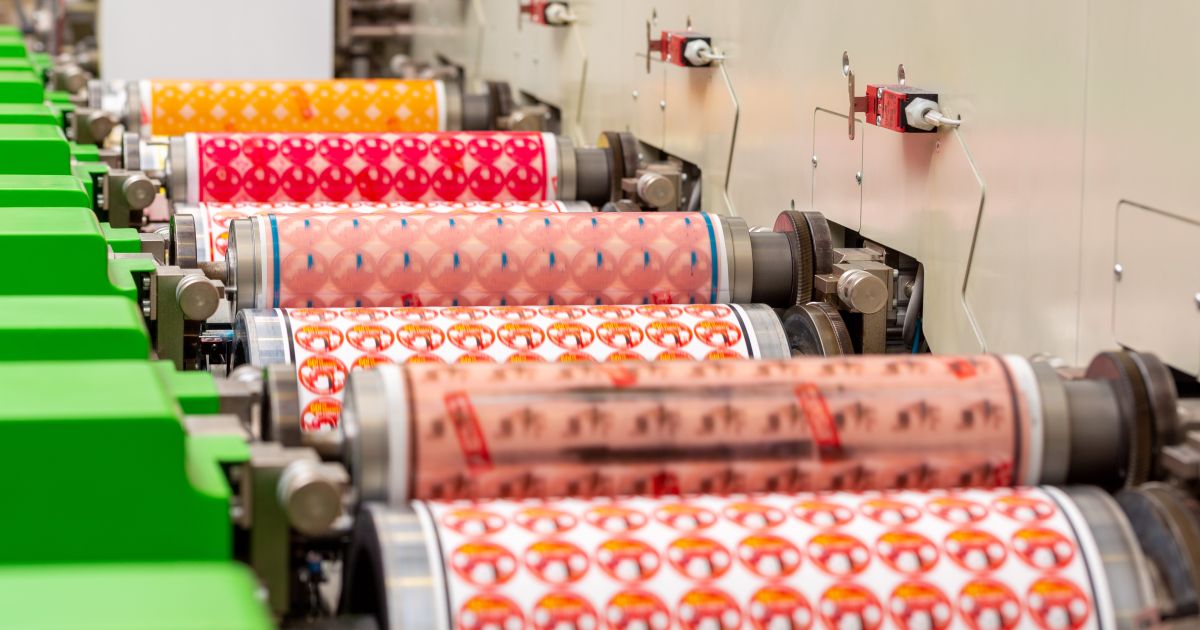The world of printing offers a variety of methods and techniques, each having its unique features and benefits. One such method, flexographic printing, is gaining immense popularity due to its versatility and efficiency. If you’re new to the field, this flexographic printing for beginners guide will provide you with a solid foundation to understand this dynamic printing process.

What is Flexographic Printing?
Flexographic printing, often referred to as flexo printing, is a modern version of letterpress printing. It employs flexible relief plates and is widely used for printing on a variety of materials such as plastic, metallic films, cellophane, and paper. This method is highly favored for its speed and ability to print on non-porous surfaces.
Why Choose Flexographic Printing?
With flexographic printing, you can enjoy several advantages, including high-speed production, cost-effectiveness, and the ability to print on diverse surfaces. It’s particularly beneficial for long print runs, making it a popular choice in the packaging industry.
The Basic Components of Flexographic Printing
For beginners venturing into flexographic printing, understanding the basic components is crucial. These include the printing plate, anilox roller, ink system, and substrate. Each component plays a vital role in ensuring the quality and efficiency of the printing process.
Printing Plates: The Heart of Flexo Printing
The printing plate is a flexible, photopolymer or rubber plate that contains the image to be printed. It wraps around a cylinder and transfers the ink onto the substrate. The quality of the plate directly affects the print quality, making it essential to use high-quality materials and precise plate-making techniques. For more on plate-making, check out our detailed guide on plate making.
The Anilox Roller: Precision in Ink Transfer
The anilox roller is a crucial component that ensures a consistent and precise amount of ink is transferred to the printing plate. It features tiny engraved cells that pick up and release a controlled amount of ink, contributing significantly to the quality of the print.
Inks Used in Flexographic Printing
In flexographic printing, water-based, solvent-based, and UV-curable inks are commonly used. Each type offers distinct advantages, and the choice depends on the substrate and the desired print quality. Understanding the characteristics of each ink type is vital for achieving the best results.
Flexographic Printing Process
The flexographic printing process involves several key steps. Initially, the printing plate is mounted onto the press cylinder. Ink is then transferred from the ink system to the anilox roller, which applies a thin, even layer of ink onto the plate. Finally, the plate transfers the inked image onto the substrate, creating the printed product.
Common Applications of Flexographic Printing
Flexographic printing is widely used in a variety of industries. Its ability to print on different substrates makes it ideal for packaging, labels, newspapers, and more. Its versatility and efficiency have made it a preferred choice for many businesses.
Flexographic Printing for Packaging
The packaging industry heavily relies on flexographic printing due to its ability to produce high-quality, colorful prints on various materials. Whether it’s food packaging, corrugated boxes, or flexible packaging, flexo printing delivers excellent results.
Advantages of Flexographic Printing
Flexographic printing offers numerous advantages, including high-speed production, cost-effectiveness, and the ability to print on a wide range of substrates. It’s particularly advantageous for long print runs and is known for its efficiency and low waste production.
Challenges in Flexographic Printing
Despite its many benefits, flexographic printing comes with its own set of challenges. These include maintaining print quality, managing ink consistency, and dealing with complex designs. However, with proper techniques and technology, these challenges can be effectively managed.
Recent Innovations in Flexographic Printing
With advancements in technology, flexographic printing continues to evolve. Innovations such as digital flexo, improved ink formulations, and enhanced plate-making technologies are further enhancing the capabilities and efficiency of flexo printing.
To learn more about how technology is impacting flexographic printing, check our insights on AI in flexographic printing.
Flexographic Printing and Sustainability
Sustainability is becoming increasingly important in the printing industry. Flexographic printing is considered a more sustainable option due to its low waste production and the use of eco-friendly inks. Many companies are adopting flexo printing to meet their sustainability goals.

Getting Started with Flexographic Printing
For beginners, starting with flexographic printing can be an exciting journey. Begin by understanding the basic components and processes, and gradually explore advanced techniques and technologies. With practice and experience, you can master this versatile printing method.
FAQs
What materials can be printed using flexographic printing?
Flexographic printing can be used on a variety of materials, including paper, plastic, metallic films, and more. Its versatility makes it suitable for different industries and applications.
Is flexographic printing cost-effective?
Yes, flexographic printing is considered cost-effective, especially for long print runs. Its high-speed production and low waste make it an economical choice for many businesses.
How does flexographic printing differ from other printing methods?
Flexographic printing differs from other methods like offset and digital printing in terms of speed, cost, and substrate compatibility. It’s particularly known for its ability to print on non-porous surfaces and its efficiency in long runs.
For further reading on flexographic printing and its applications, visit this resource.






